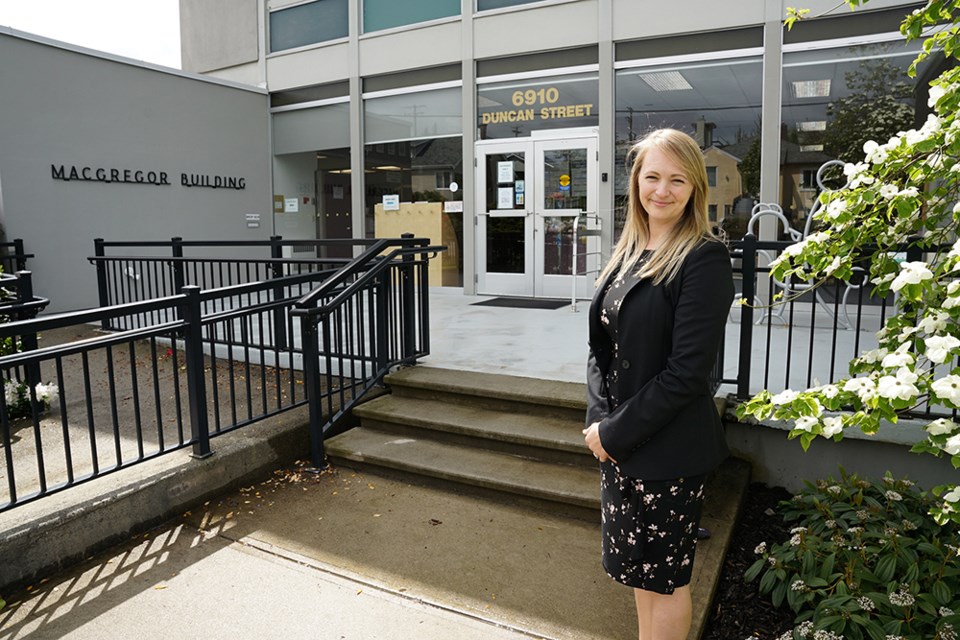Public engagement for City of Powell River’s 2025 to 2029 financial plan is more robust than in previous years.
At the February 4 committee of the whole meeting, chief financial officer Mallory Denniston said she was presenting results of the 2025 budget engagement initiative. She said the first online survey was a budget simulation, where residents were presented with a draft one operating budget.
Respondents were given the opportunity to adjust budget allocations across departments according to their individual priorities, while maintaining the legislative requirement to balance the budget. Respondents could also provide feedback through comments.
“I’m happy to report there were 104 survey submissions, which is an increase of 35, or 51 per cent,” said Denniston. “There were 221 comments, which is an increase of 175, or 380 per cent over the prior year. It was wonderful news to see more engagement this year over the prior year. However, despite the increase in survey responses, keep in mind that the survey responses represent 1.1 per cent of the city’s population, which is not considered statistically valid.”
Denniston said overall, the budget simulation proposed property and parcel tax reductions of $1.1 million, which is 3.6 per cent less than is currently reflected in draft one of the budget. She said the 2025 property tax increase recommended was 6.9 per cent, rather than the 11.4 per cent as proposed in draft one of the city’s budget.
She said in order to balance the budget, several adjustments to service levels were proposed in the survey. The first was a $294.905 reduction in parks, recreation and culture, or a 3.6 per cent decrease. The second was a $260,008 decrease in transportation services, followed by protective services at $245,852, and a $133,980 decrease in environmental development.
Respondents could also participate in a service prioritization survey. Denniston said this simulation allowed respondents to write the services they most valued. She said there were 52 submissions, which was an increase of 33 from the prior year, and there were 89 comments, up from 54 in the prior year.
The top three prioritized services were water, roads and sewer. This was followed by garbage and recycling, the RCMP and fire department. The services with the lowest priority ranking include the fitness facility, bylaws, public meetings and engagement, Willingdon Beach campsite, the museum, and meeting rooms, according to Denniston.
The city hosted a budgetary public open house on January 16 that was attended by approximately 60 residents, which was an increase in attendance over the prior year, said Denniston. Mayor and council, along with department directors, were present to address questions and receive comments, she said. Most attendees had filled out the online budget survey, and a few also provided handwritten comments, she added.
“Overall, the two surveys and the open house provided council with 362 comments and a high-level guidance on service prioritization,” said Denniston.
For the next step, draft two of the city’s five-year financial plan will be presented to council on February 27. Denniston said draft two will consolidate all the direction received to date. After, the financial plan bylaw requires three readings and adoption in March, which will leave sufficient time for the property tax rate discussion and property tax rates bylaw adoption, she said.
Councillors comment
Councillor Jim Palm said the number of people participating in surveys was substantially higher than in previous years, which tells him the public is engaged in what is happening at city hall and within city boundaries.
“I greatly appreciate all the input,” said Palm. “I read each and every comment.”
Councillor Rob Southcott said it was stated that 1.1 per cent response from the city’s population in the surveys does not represent a statistically valid response. He asked what percentage, at a minimum, would be considered a statistically valid response.
Chief administrative officer Lisa Bhopalsingh said mailout surveys have traditionally been done for statistically valid exercises and are done through a consulting firm. She said by doing the survey online, it can be skewed.
“To do it statistically valid in a way that council can rely on and not be seen as being influenced by any one group, we would be engaging one of the polling companies,” said Bhopalsingh. “They would put together a series of questions and would make sure the surveys are distributed in order to ensure there was good representation.”
Southcott asked about the cost of retaining a polling firm. Bhopalsingh suggested costs can range, but a budget of $30,000 would likely cover it.
Councillor George Doubt said the open house was useful. He asked staff how they interpreted the comments that were expressed. He said he read all of them and it was difficult to pick what a majority was expressing.
Denniston said having read through the comments, beyond categorizing them, it was thought that any staff summary would appear to include a staff bias.
Councillor and committee chair Trina Isakson introduced an extensive motion recommending a series of cuts that could be considered for the second draft of the budget. She said staff was working to get the budget to a five per cent tax increase. She said she listed the items in her motion because she wants more information about them and for them to be options to consider.
“We haven’t given staff any direction on what specifically to bring back when it comes to five per cent increases,” said Isakson. “My intention is for staff to include these changes as options to consider in relation to draft two.
Councillor Cindy Elliott thanked Isakson for the motion and the thought behind it. She said her preference would be to not approve the motion at this time. She said council had already given direction for staff to come back with ideas.
“We have expert directors who can target where they think the best places are,” said Elliott.
Isakson’s motion failed.
Join the Peak's email list for the top headlines right in your inbox Monday to Friday.


